Last week a statue of Taiwan’s former autocratic president, Chiang Kai-shek, was vandalized on the campus of National Chengchi University in Taipei, a university established by Chiang in Nanjing in 1927 before relocating to Taiwan following the exile of the Republic of China government to the island. (For full disclosure, I’m a Ph.D. candidate at the university.) When the news broke that night I visited the statue to take photographs and posted them on various social media platforms. I was not surprised the majority of responses from my Taiwanese associates were in support of the vandalism.
The act was claimed by a group of pro-independence activists, “Shot for Democracy” who posted a statement on Facebook the night of their actions. They claimed they were working to remove the traces of Taiwan’s past dictatorship from the university, spark a debate, and push for greater action on transitional justice issues since Martial Law was abolished 32 years ago. The group argued that recent national laws that resolved to address the abuses of the past have been slow-rolled. They protested the authoritarian system in general, established by the Chinese Nationalist Party, the Kuomintang (KMT), whose vestiges still linger in public institutions, saying it still lies behind the structure of Taiwan’s political society.
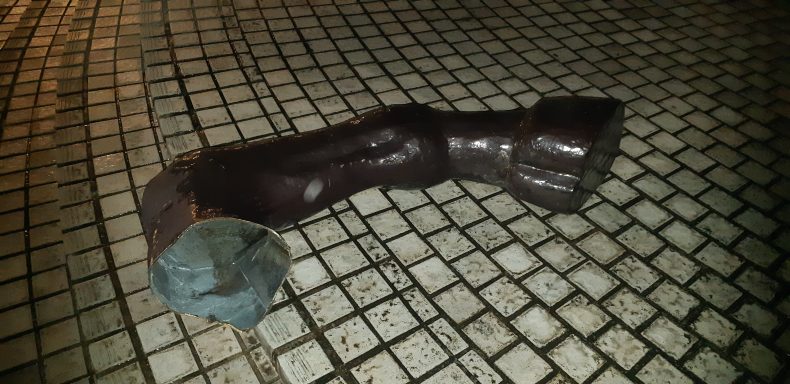
The equestrian statue of Chiang Kai-shek at National Chengchi University was vandalized in the early morning hours of February 22, 2019 by Shot for Democracy. The group splashed red paint on the statue and sawed off one of the horse’s bronze hoofs (pictured here) in order to bring attention to the unfulfilled issue of transitional justice on Taiwan. Photo by James X. Morris.
The timing of the act is not insignificant: It came in the wake of an act of vandalism by a pro-China group in Taipei’s 228 Peace Memorial Park, a site dedicated to the memory of an estimated 20,000 massacred in Taiwan in a crackdown which began on February 28, 1947. This Thursday, February 28, 2019 is the 72nd anniversary of what is known in Taiwan as the 228 Incident, “er er ba” locally.
Last October I wrote a piece for The Diplomat on the legacy of Chiang Kai-shek following the vandalization of the memorial hall and museum dedicated to his memory by protesters. A photo of the now-vandalized statue was used in the piece. National Chenghi University was Chiang’s pet project for educating KMT-ROC officials, and targeting this particular statue was especially symbolic. Now seems as fitting a time as ever to discuss this matter deeper.
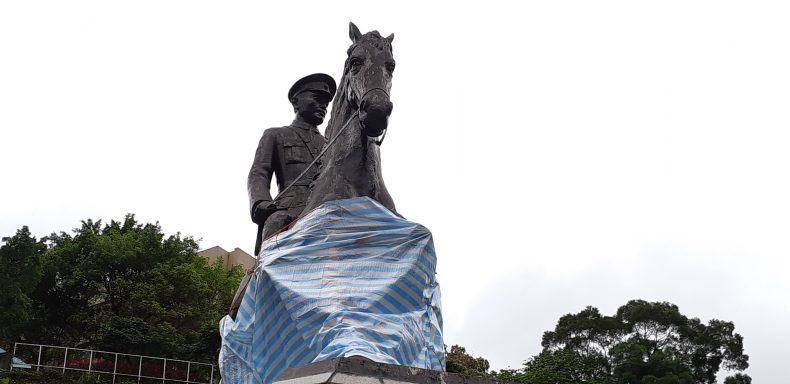
The equestrian statue of Chiang Kai-shek was covered with tarps following the vandalism. Photo by James X. Morris.
To understand what has happened, it is necessary to know the history of the 228 Incident and the ensuing decades of Martial Law.
The Republic of China was in a weak position when KMT soldiers and officials occupied Taiwan at the end of World War II. Their soldiers had been fighting against communist insurrections and warlord armies since the 1920s in an attempt to reunify China, and no sooner had World War II ended than the Chinese Civil War flared back up. As George Kerr, an American diplomat who was in Taiwan, relays in his book Formosa Betrayed, the KMT officials mismanaged Taiwan from the start, siphoning off its infrastructure and wealth for the war effort on the mainland. The native Taiwanese who had been looking forward to reunification with their mainland brethren after 50 years of Japanese colonization soon lost their enthusiasm. All industry was monopolized by the nationalists. Inflation skyrocketed, corruption was rampant, and unemployment high. What the Japanese had developed on the island for their war effort, the KMT plundered and brought back to China.
On February 27, 1947, when enforcers for the Tobacco Monopoly Bureau beat a widowed cigarette peddler in Taipei, a crowd formed. An argument followed. A shot rang out, and one Taiwanese was dead. The following day the Taiwanese gathered outside of the KMT Governor-General administration building in Taipei to protest their treatment. They were met with machine gun fire. Several protesters broke into a nearby radio station to broadcast to the island what had happened. Martial law was declared, then called off. But it was too late. The island revolted and for more than a week local Taiwanese managed to wrest control of the island from the KMT. Governor-General Chen Yi stalled before requesting more soldiers from the mainland to put down the riots.
On March 8, nationalist soldiers arrived in the port of Keelung. War-weary from years of endless fighting, they were set loose against the population, allowed to kill indiscriminately. Kerr describes grisly scenes of soldiers driving through Taipei, shooting their guns at anyone unlucky enough to be out on the street. Bodies laid where they fell due to the risk of getting shot retrieving anything. When the KMT had retaken control of the island, groups and individuals affiliated with the uprising were denounced, imprisoned, and executed as communists. The White Terror had begun.
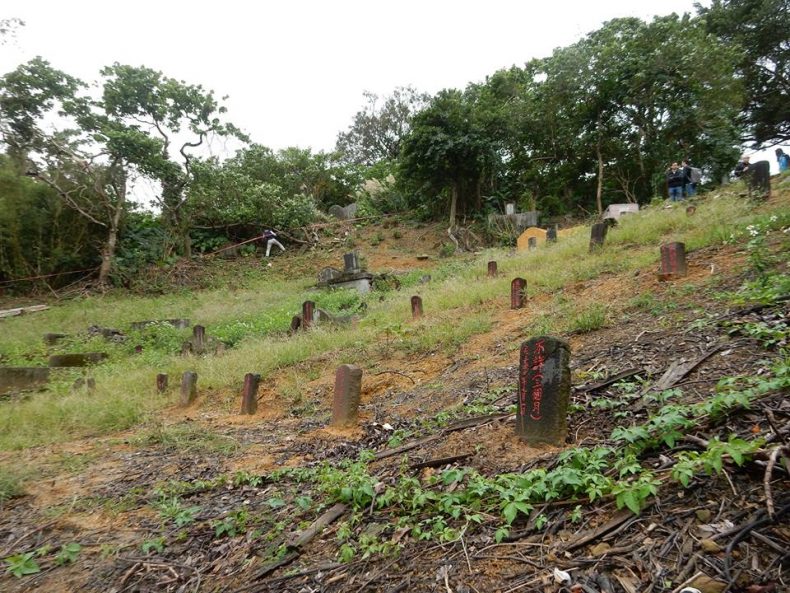
Tombs belonging to victims of the White Terror rest in the mountains near Taipei’s Liuzhangli neighborhood in 2016. The White Terror reached its peak in the 1950s, and many of the KMT’s own fell victim for suspected communist sympathizing. Photo by James X. Morris.
Chiang was in China when the 228 Incident occurred. But as the KMT suffered defeat after defeat in the civil war, Martial Law was declared on Taiwan in 1949 in preparation for 2 million soldiers, officials, bureaucrats, and civilians to make the herculean evacuation to the island. Among those were Chiang Kai-shek and Chen Yi, now a prisoner for attempting to strike a peace deal with the communists. Chen was executed in Taipei as a traitor in a gesture meant to pacify the still-unhappy population.
The 228 Incident may be considered the overture for the darkest chapter of Taiwan’s history: A prelude to four decades of human rights violations in which a monolithic party-state entrenched in a never-ending civil war mentality, fearful of infiltration by Mao Zedong’s communist agents, turned on its own, initiating a period of White Terror under history’s longest period of Martial Law. The killing machine reached its peak in the 1950s. Although the island was labeled “Free China” by the West, it was anything but. A massive domestic spy network kept tabs on many. The Taiwanese lived in fear of late-night knocks on their doors; a father disappearing; the sound of firing squads at the riverside late at night; political imprisonment for daring to challenge the regime’s heavy-handed policies; or extrajudicial state-sanctioned murder. I was told by one informant the story of a family living in the Taipei region being harassed by local soldiers. A neighbor volunteered to discuss the issue with the soldiers on their behalf but was never seen again. The family was told by another neighbor to flee that same night.
By the 1980s Taiwan had developed and many restrictions were relaxed. Martial Law was lifted in 1987, and the last law of that period was abolished in 1992. That Taiwan has transformed itself into one of East Asia’s most vibrant, free, and celebrated democracies is a testament to the will of the Taiwanese for a better life and their commitment to human rights.
So why has it taken so long for transitional justice to occur? The answer lies in how Taiwan transformed from a dictatorship to a democracy. The system was slowly eased into liberalizing, followed by instituting democratic elections.
Chiang’s son lifted Martial Law in 1987, 12 years after his death. As the story was told to me, restrictions were relaxed in the 1980s, and protests had grown stronger. One day a large crowd had organized to march on the compound where the KMT old guard was meeting. Rumor has it there was a fear that the leaders, by then in their 80s or 90s, were at risk of heart attacks if they had to face such a crowd. Martial Law was simply called off, and the protesters were told to go home.
Every year at this time it is common to read stories about acts of vandalism against imagery of Taiwan’s past dictatorship. Typically, statues and emblems are doused with red paint to represent the blood spilled at the hands of the KMT. As a response, most statues are removed or preventatively relocated to Chiang’s mausoleum in Taoyuan.
Taiwan-based human rights activist and academic Linda Arrigo believes removal of the statues may not be the best option.
“With removal, it is too easy to forget the legacy of White Terror — I think the remaining statues should be left in place, maybe with red paint, with large explanatory signs of the history next to them,” she said.
Vandalized statues remaining in place may be one way to keep the reality of the dictatorship and the reaction of the Taiwanese present in the minds of future generations.
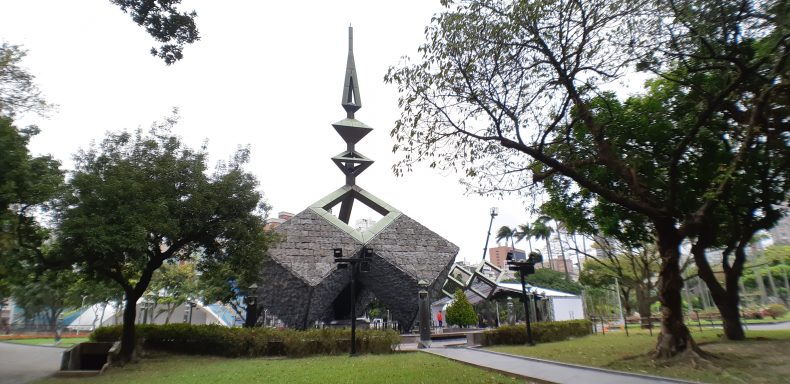
The 228 Peace Monument stands in the center of the 228 Peace Memorial Park in downtown Taipei. Photo by James X. Morris.
There have been some steps toward recognizing the excesses of the past. KMT President Lee Teng-hui (1988-2000) issued an apology for the 228 Incident in 1995, urging greater public discussion on the issue. For the tragedy’s 50th anniversary, the park adjoining the radio station from which the broadcast was made about the massacre in Taipei was renamed the 228 Peace Memorial park. More recently former KMT President Ma Ying-jeou (2008-2016) issued an apology to victims of the White Terror in 2013, and attempted to distance the modern KMT of a democratic Taiwan further from the authoritarian KMT of the past under Chiang’s dictatorship.
What has irked activists for transitional justice is their sense of abandonment by the KMT’s opposition party, the Democratic Progressive Party (DPP), which has held a pro-independence and transitional justice platform. The party won a majority of Taiwan’s municipalities and counties in the 2014 local elections, and won a historic victory in 2016 by taking control of the executive and legislative branches in the central government for the first time. Laws were passed, but have been slow-rolled. The DPP in the past could claim to be stonewalled by the KMT. But now? If the 2020 general elections look anything like the 2018 local elections, the DPP may not have much time left.
In their statement, Shot for Democracy declared that greater transitional justice and democratic processes are necessary for the future of Taiwan’s economy and sovereignty, arguing that the current status quo of cross-strait relations is unsustainable. The group cited the shifting attitudes of the Taiwanese, particularly among their youth, toward an independent Taiwan as a reason for their activity.
The Kuomintang has always maintained a unification policy across the Taiwan Strait. The KMT of the past pursued a policy of retaking China by force. The KMT of the present has pursued a policy of integrating the two economies.
For the Taiwanese who push for democracy and transitional justice, there exists a very real fear this island will be pulled back into an autocratic system should the KMT return to power. In this context, the vandals reasoned that a statue had to be symbolically sacrificed.
Should all emblems of Taiwan’s authoritarian past be removed? Or should the vandalism be recontextualized as a learning tool? How soon will transitional justice be rolled out? The political debate is still raging, and certainly won’t end any time soon.
But for now, on February 28, please take a moment to remember the victims.
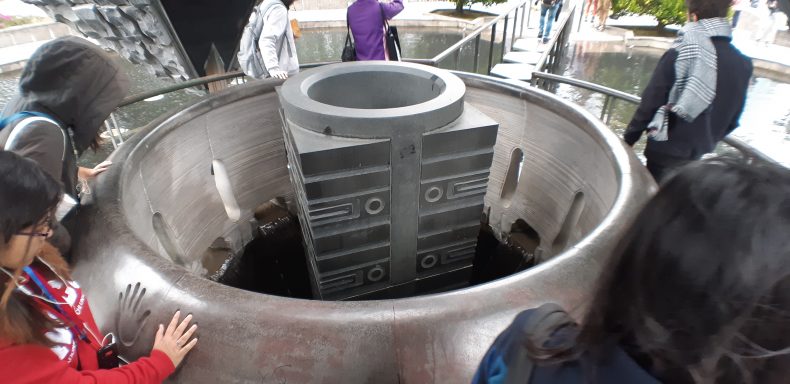
Visitors to the 228 Peace Monument are encouraged to interact with an installation surrounding a tsong (琮), an object associated with death, to become closer with the victims of the 228 Incident. Photo by James X. Morris.

































